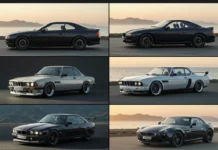Introduction to Muscle Cars in Hollywood
Few cinematic icons stir the senses like the muscle car. Their throaty exhaust notes, aggressive lines, and raw power have defined countless unforgettable moments on the silver screen. These vehicles are more than mere transportation—they represent freedom, rebellion, and a uniquely American sense of adventure.
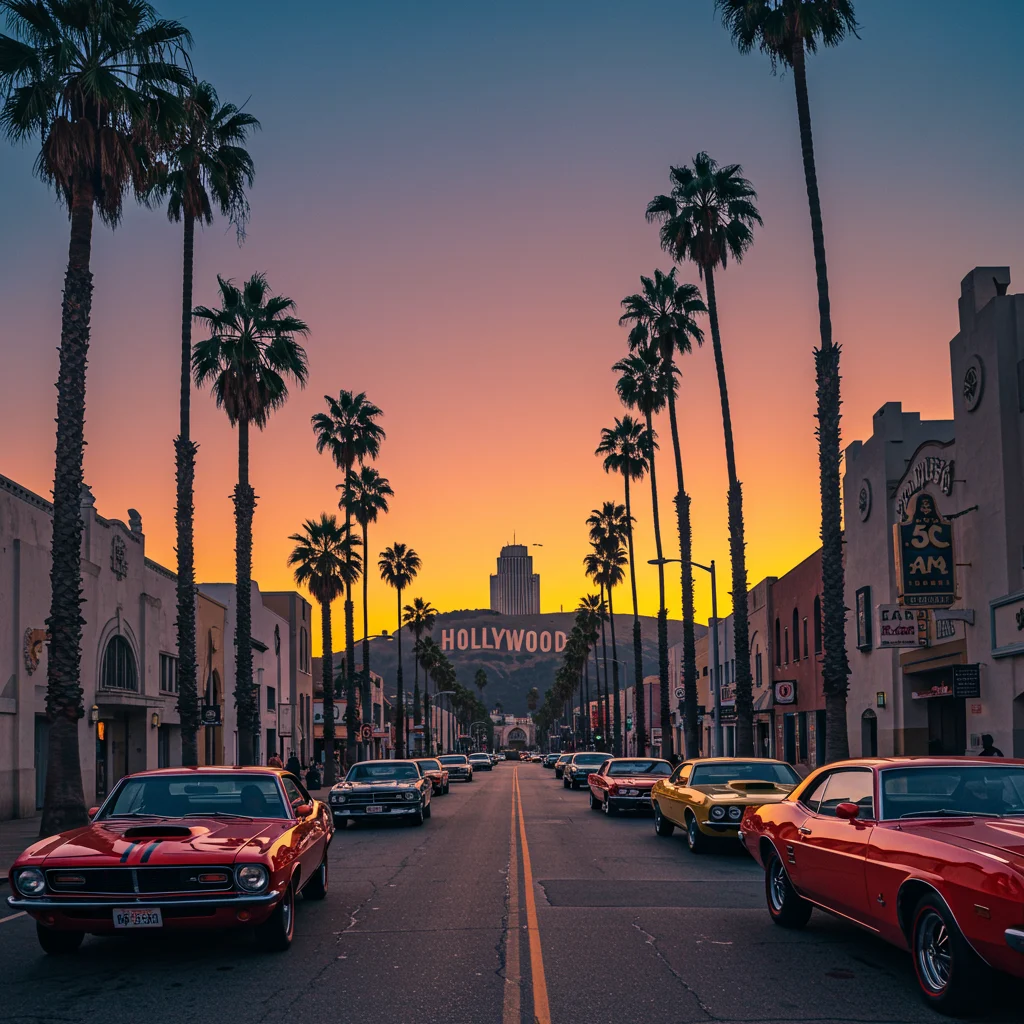
What Defines a Muscle Car?
At its core, a muscle car is characterized by a large-displacement V8 engine, rear-wheel drive, and a relatively lightweight, mid-sized frame. Born in the 1960s, these cars were engineered for straight-line speed and affordable performance. Their distinctive looks and thunderous acceleration quickly set them apart from other vehicles on the road.
How Have Muscle Cars Influenced Hollywood?
Muscle cars have become an indelible part of Hollywood’s visual language. Directors use them to signal a character’s attitude, amplify tension in chase scenes, or simply to create an atmosphere of raw excitement. These vehicles often become characters in their own right, with personalities and legacies that outlive the films themselves.
Why Are Muscle Cars So Popular in Movies?
The popularity of muscle cars in movies stems from their visceral presence on screen. Their sound, speed, and style can elevate an action sequence, while their cultural associations evoke nostalgia and adrenaline. Audiences are drawn to their untamed energy, which makes them a natural choice for filmmakers seeking to inject drama and intensity into their stories.
Criteria for Selecting Iconic Muscle Cars
To determine which muscle cars are truly iconic in Hollywood, we considered their impact on film, recognition factor, and influence on both automotive and pop culture. Cars that played pivotal roles, contributed to legendary chase scenes, or inspired generations of fans earned their place on this list.
Overview of Muscle Cars Featured in Hollywood
The connection between muscle cars and cinema runs deep, with each decade bringing new models and unforgettable moments. These vehicles have helped shape the tone and energy of countless films, often representing more than just horsepower—they symbolize the spirit of the era.
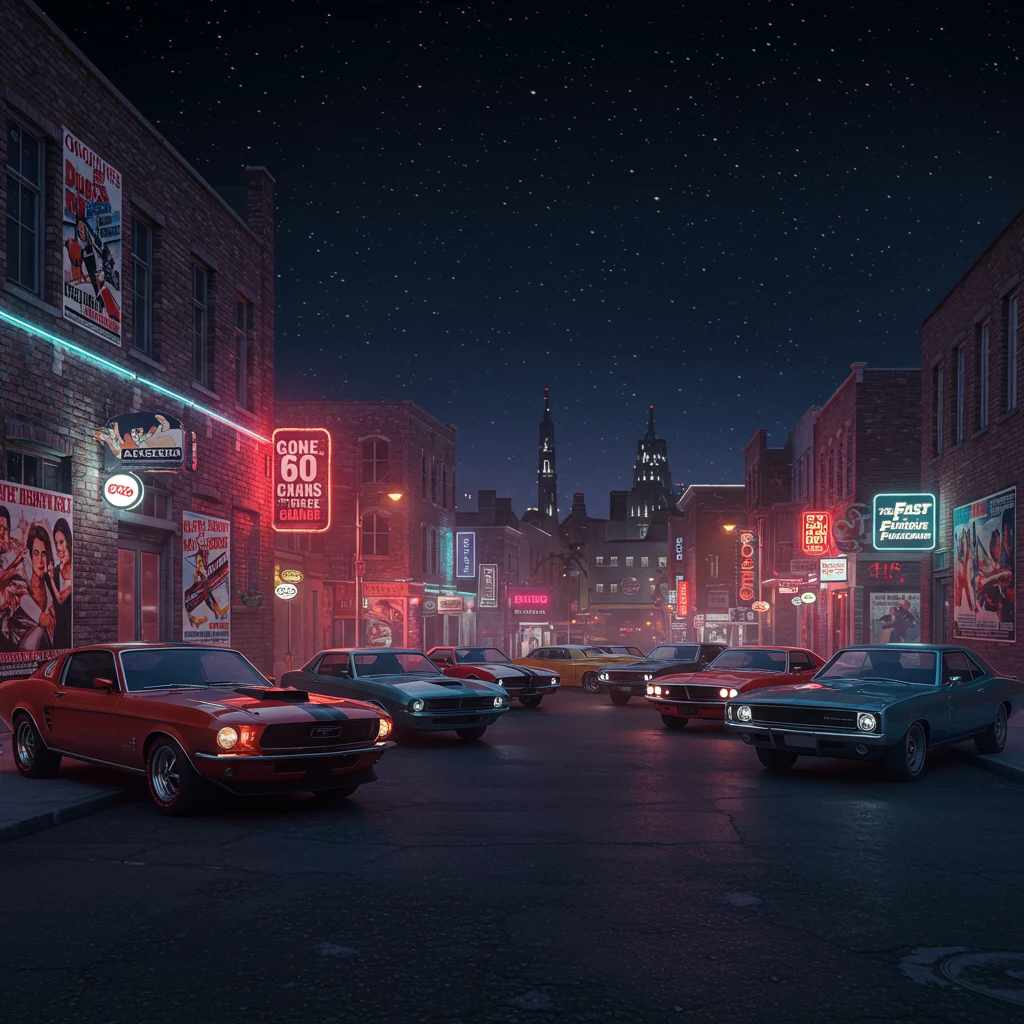
Timeline: Muscle Cars in Cinema History
Muscle cars first thundered onto movie screens in the late 1960s and early 1970s, coinciding with their explosion in American car culture. From the gritty streets of San Francisco in “Bullitt” to the high-octane world of “Fast & Furious,” each era brought its own legends and styles.
How Muscle Cars Became Movie Stars
Directors and stunt coordinators quickly realized the cinematic potential of muscle cars. Their dramatic looks and explosive power made them ideal for chase scenes and stunts. Over time, certain models became forever linked with specific films, earning cult status among fans and collectors.
Top 10 Iconic Muscle Cars in Hollywood Movies
Let us look at the ten most iconic muscle cars that have left an indelible mark on Hollywood and car culture alike.
![]()
1. 1968 Ford Mustang GT – Bullitt
What Made the Bullitt Mustang Legendary?
The 1968 Ford Mustang GT driven by Steve McQueen in “Bullitt” is often cited as the quintessential movie muscle car. Its Highland Green paint, understated styling, and raw, unfiltered sound made it an instant classic. The car’s authenticity and the actor’s own driving skills elevated its legendary status.
Key Chase Scenes Featuring the Mustang
The Mustang’s most famous moment is the heart-stopping chase through San Francisco’s hilly streets. The roar of the V8 and the screech of tires created a sense of speed and danger unmatched in its era. This sequence set a gold standard for cinematic car chases.
Behind the Scenes: Filming with the Mustang
Filming the chase required multiple Mustangs and skilled stunt drivers. The production’s commitment to realism—eschewing special effects in favor of practical driving—helped cement the car’s authenticity. The Mustang’s legacy lives on, inspiring not just movie fans but also car enthusiasts worldwide, as highlighted in our exploration of the top American muscle cars of all time.
2. 1970 Dodge Charger – The Fast and the Furious
How Did the Charger Become a Franchise Icon?
The 1970 Dodge Charger is the beating heart of the “Fast & Furious” franchise. Its menacing presence and formidable performance made it a natural extension of Dominic Toretto’s character. The Charger’s blend of brute force and style helped redefine what a movie muscle car could be.
Most Memorable Moments with the Charger
From wheel-standing launches to explosive drag races, the Charger stole the spotlight in many of the series’ most intense scenes. Its deep rumble and aggressive acceleration became a signature of the franchise, much like the drift cars that dominated “Tokyo Drift,” which we examined in our look at the Fast and Furious Tokyo Drift cars.
Restorations and Replicas Used On Set
Given the high-risk stunts, multiple Chargers were built and modified for filming. These included reinforced chassis, upgraded engines, and even some disguised as stunt doubles for the most dangerous scenes. The enduring appeal of the Charger is evident in its continued use throughout the franchise.
3. 1977 Pontiac Firebird Trans Am – Smokey and the Bandit
Why Is the Trans Am Synonymous with the Film?
The 1977 Pontiac Firebird Trans Am became inseparable from “Smokey and the Bandit.” Its black and gold color scheme, T-top roof, and bold graphics turned it into an instant icon. Burt Reynolds’ charismatic performance behind the wheel only added to the car’s mystique.
Stunt Driving and the Trans Am
The film’s relentless pace demanded a car that could handle jumps, drifts, and high-speed pursuits. The Trans Am delivered, thanks to careful preparation and skilled stunt drivers. Its performance in action set-pieces inspired a generation of fans and car buyers alike.
Cultural Impact of the Trans Am
The Trans Am’s popularity soared after the film’s release, transforming it into a symbol of 1970s cool. Its legacy is seen in car shows, collectibles, and even modern reinterpretations, proving the enduring allure of the classic muscle car.
4. 1969 Chevrolet Camaro – Transformers
How Did Bumblebee Transform the Camaro’s Image?
Before “Transformers,” the Chevrolet Camaro was respected but not always celebrated. The character of Bumblebee changed that, infusing the car with personality and heart. The Camaro’s transformation from a rusty relic to a modern powerhouse mirrored the franchise’s themes of reinvention and resilience.
Evolution of Bumblebee in the Franchise
Across multiple films, Bumblebee’s Camaro form evolved—showcasing new body styles, technologies, and custom touches. Each iteration reflected advances in automotive design and special effects, keeping the character fresh and relevant for new audiences.
Camaro’s Popularity Post-Transformers
The Camaro enjoyed a resurgence in popularity following its on-screen success. Chevrolet capitalized on this by reintroducing retro-inspired models, and fans flocked to dealerships for a piece of movie magic. The Camaro’s story demonstrates how film can shape real-world automotive trends.
5. 1971 Ford Mustang Mach 1 – Diamonds Are Forever
What Makes the Mach 1 Stand Out in Bond Films?
The 1971 Ford Mustang Mach 1 brought American muscle to the world of James Bond. Its sleek design and formidable power provided a fresh counterpoint to the European sports cars typically associated with the franchise. The Mach 1’s bold presence made it a memorable addition to Bond’s garage.
Famous Chase Sequences with the Mach 1
One of the film’s most famous scenes featured the Mach 1 careening through the streets of Las Vegas, performing a dramatic two-wheel stunt. The car’s agility and power were on full display, captivating audiences and setting a new bar for Bond car chases.
Bond’s Legacy with Muscle Cars
While Bond is often linked to Aston Martins, the Mach 1 proved that American muscle could hold its own in the world of international espionage. Its appearance in “Diamonds Are Forever” remains a standout moment in the franchise’s automotive history.
6. 1970 Chevrolet Chevelle SS – Fast & Furious
Why Did the Chevelle SS Become a Fan Favorite?
The 1970 Chevrolet Chevelle SS captured the spirit of muscle car enthusiasts with its aggressive styling and potent engine. Its use by Dominic Toretto in the “Fast & Furious” series cemented its place in the pantheon of legendary movie cars.
Key Scenes Featuring the Chevelle SS
The Chevelle SS starred in high-stakes races and dramatic confrontations, showcasing its brute force and classic design. Its role in the films resonated with both longtime car fans and newcomers alike, much like the appeal of convertible cars in contemporary cinema, as discussed in our feature on the best 4 passenger convertible cars.
Chevelle SS in Car Culture
Beyond the movies, the Chevelle SS has become a sought-after collector’s item and a staple at car shows. Its enduring popularity is a testament to the car’s design and the influence of its Hollywood appearances.
7. 1970 Plymouth Barracuda – Phantasm
How Did the Barracuda Add to the Film’s Atmosphere?
The 1970 Plymouth Barracuda in “Phantasm” amplified the film’s eerie and dreamlike mood. Its sinister black paint, muscular stance, and guttural exhaust note heightened the film’s sense of unease and suspense, making the car an integral part of the story’s unsettling atmosphere.
Unique Features of the Movie Barracuda
The Barracuda used in “Phantasm” was a true performance machine, equipped with a powerful engine and custom modifications. Its imposing presence on screen contributed to the film’s cult status and helped establish the Barracuda as a favorite among horror and muscle car aficionados.
Barracuda’s Cult Following
Fans of “Phantasm” and classic cars alike have kept the Barracuda’s legend alive through restorations, tributes, and fan clubs. The car’s unique role in the film world continues to inspire passionate communities to this day.
8. 1967 Shelby GT500 – Gone in 60 Seconds
Why Is ‘Eleanor’ So Iconic?
‘Eleanor,’ the 1967 Shelby GT500 from “Gone in 60 Seconds,” stands as one of the most recognizable movie cars ever built. Its custom bodywork, silver paint, and racing stripes gave it a unique personality, while its central role in the film’s plot elevated its status to legend.
Stunts and Action with the GT500
The film’s climactic chase sequences featured ‘Eleanor’ in daring jumps, high-speed pursuits, and close-quarters maneuvers. Skilled stunt drivers and meticulous preparation brought these scenes to life, setting new standards for action filmmaking.
Legacy of ‘Eleanor’ in Pop Culture
‘Eleanor’ has transcended the movie, becoming a symbol of desire for car enthusiasts worldwide. Its influence can be seen in custom builds, merchandise, and even video games, proving the lasting impact of a well-crafted on-screen icon.
9. 1973 Ford Falcon XB GT – Mad Max
What Role Did the Interceptor Play in Mad Max?
The 1973 Ford Falcon XB GT, known as the “Pursuit Special” or “Interceptor,” was the perfect match for the dystopian world of “Mad Max.” Its menacing appearance and supercharged performance embodied the film’s brutal, lawless landscape.
Design Modifications for the Movie
Movie designers transformed the Falcon with custom bodywork, oversized exhaust pipes, and an iconic blower protruding from the hood. These modifications gave the car an otherworldly presence, making it instantly recognizable to fans of the franchise.
The Falcon’s Influence on Movie Cars
The Interceptor’s unique style has inspired countless replicas, homages, and even other film vehicles. Its legacy endures in cinema and car culture, influencing how filmmakers approach the design of post-apocalyptic vehicles.
10. 1970 Dodge Challenger R/T – Vanishing Point
How Did the Challenger Embody the Spirit of the Film?
The 1970 Dodge Challenger R/T in “Vanishing Point” symbolized the pursuit of freedom and the open road. Its white paint and minimalist styling emphasized the car’s purity and the existential themes at the heart of the film.
Chase Sequences and Driving Stunts
The film’s relentless pace and breathtaking stunts showcased the Challenger’s speed and handling. Wide desert highways, dust clouds, and the roar of the V8 created an immersive sensory experience for viewers.
Challenger’s Enduring Legacy
The Challenger’s role in “Vanishing Point” has influenced generations of filmmakers and car lovers. Its association with counterculture and the quest for autonomy continues to resonate today, inspiring new interpretations and tributes.
Honorable Mentions: Other Notable Muscle Cars in Film
While only ten cars could make the main list, many other muscle cars have shone in supporting roles or featured in memorable scenes throughout film history.

Iconic Muscle Cars in Minor Roles
Vehicles such as the AMC Javelin, Oldsmobile 442, and Buick GSX may not have dominated the screen, but their unique designs and brief appearances added depth to the world of cinema muscle cars. Their presence demonstrates the variety and richness of the genre.
Why Didn’t These Cars Make the Top 10?
Some cars earned cult followings or appeared in influential films, but did not reach the same level of cultural impact or recognition as our top ten. Factors such as screen time, association with major stars, or technical limitations sometimes kept them just outside the spotlight.
The Evolution of Muscle Cars in Modern Cinema
As filmmaking and technology have advanced, so too has the portrayal of muscle cars on the big screen. Modern films continue to reinterpret these classics for new audiences.
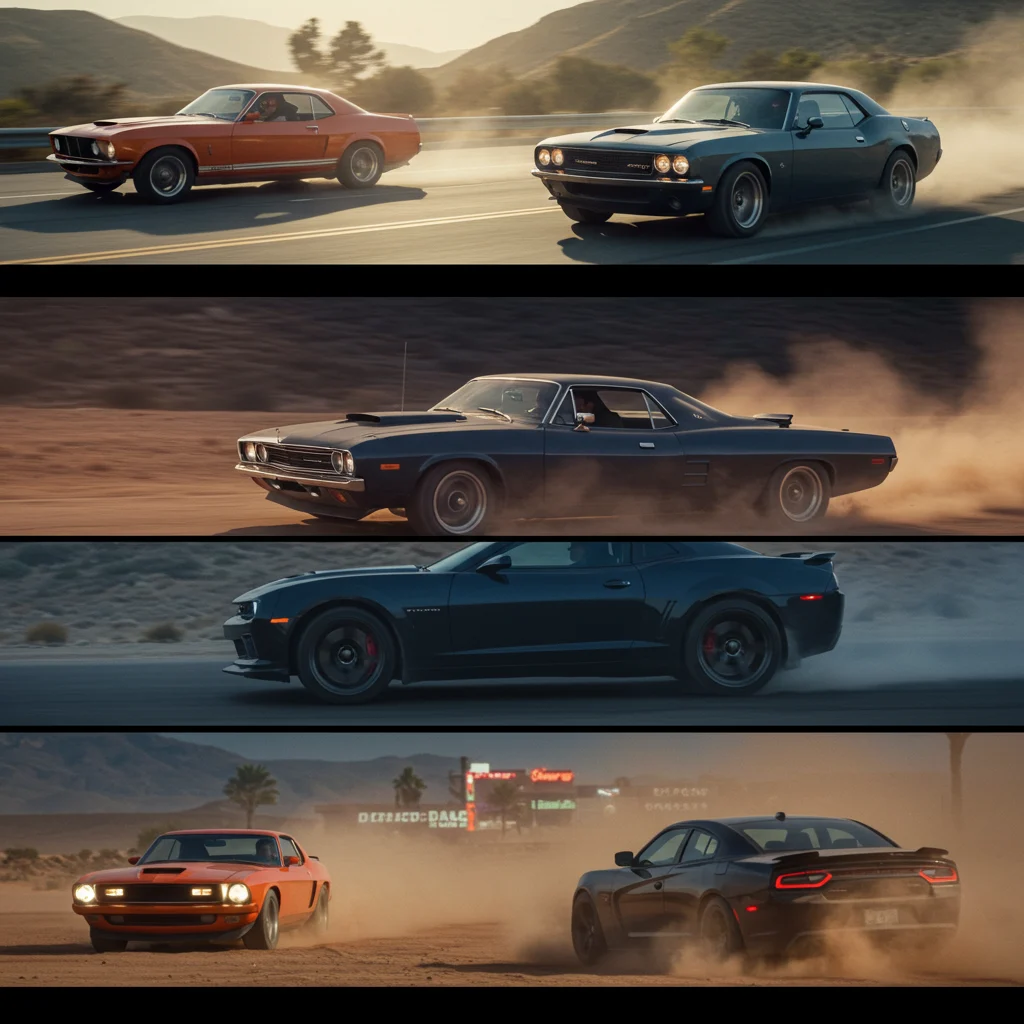
How Are Muscle Cars Portrayed in Recent Movies?
Today’s muscle cars appear in a range of genres, from superhero blockbusters to street racing thrillers. Filmmakers often update classic models with contemporary features, blending nostalgia with innovation to appeal to both longtime fans and younger viewers.
Trends in Muscle Car Casting
Recent years have seen a resurgence of classic muscle cars, often restored or modified for on-screen performance. These trends reflect the ongoing fascination with speed, power, and the romance of the open road. For those interested in a different kind of car performance, we also explored the best rally cars for beginners in a separate guide.
Electric Muscle Cars: The Future of Hollywood?
With the automotive industry shifting toward electrification, filmmakers are beginning to showcase electric muscle cars. These vehicles promise instant torque and futuristic styling, opening new possibilities for cinematic action while preserving the spirit of classic muscle.
Behind the Scenes: Filming with Muscle Cars
Bringing muscle cars to life on screen requires creativity, technical expertise, and a commitment to safety. Let’s examine the process behind these memorable sequences.
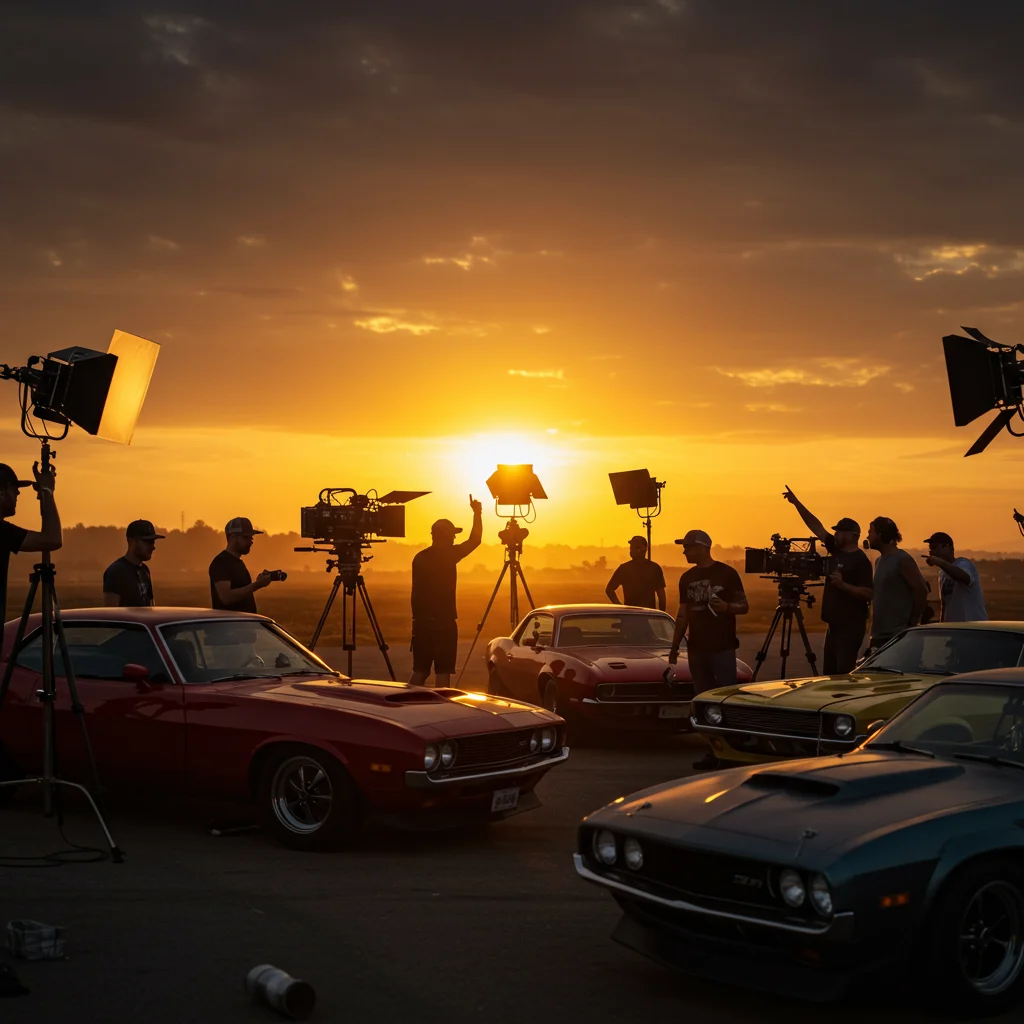
What Modifications Are Made for Movie Stunts?
Movie muscle cars are often heavily modified for stunts. Upgrades may include reinforced frames, roll cages, upgraded brakes, and performance engines. These changes allow cars to withstand the rigors of filming while delivering the desired visual impact.
Safety Measures and Stunt Coordination
Safety is paramount on set. Stunt coordinators plan each sequence meticulously, using practice runs and safety gear to minimize risk. Multiple vehicles are prepared for different shots, ensuring both continuity and crew wellbeing.
Challenges of Using Classic Cars on Set
Filming with vintage muscle cars can present unique challenges. Parts may be scarce, and older vehicles require careful handling to prevent damage. Skilled mechanics and restorers are essential members of the production team.
As experts often say:
“Cars are more than machines in film—they’re vessels for emotion, storytelling, and spectacle.”
Cultural Impact of Muscle Cars in Film
The influence of muscle cars extends far beyond the screen, shaping trends and fostering passionate communities around the world.

How Have Muscle Cars Shaped Pop Culture?
Muscle cars have inspired everything from video games to fashion, music, and art. Their rebellious image resonates with audiences seeking excitement and individuality. The enduring appeal of these vehicles is a testament to their power as cultural symbols.
Merchandising and Fan Communities
Movie muscle cars have spawned a vast array of merchandise, from scale models to apparel and collectibles. Fan clubs, online forums, and car shows allow enthusiasts to connect and celebrate their shared passion. Iconic female racers have also contributed significantly to car culture, as seen in our coverage of iconic female racers in car racing history.
Muscle Cars as Symbols of Rebellion and Freedom
Perhaps more than any other vehicle, the muscle car represents a challenge to authority and a yearning for independence. These themes are woven throughout film history, reinforcing the deep connection between muscle cars and the American spirit.
Frequently Asked Questions About Muscle Cars in Movies
Curious moviegoers and car enthusiasts alike often have questions about the authenticity and availability of these legendary vehicles.
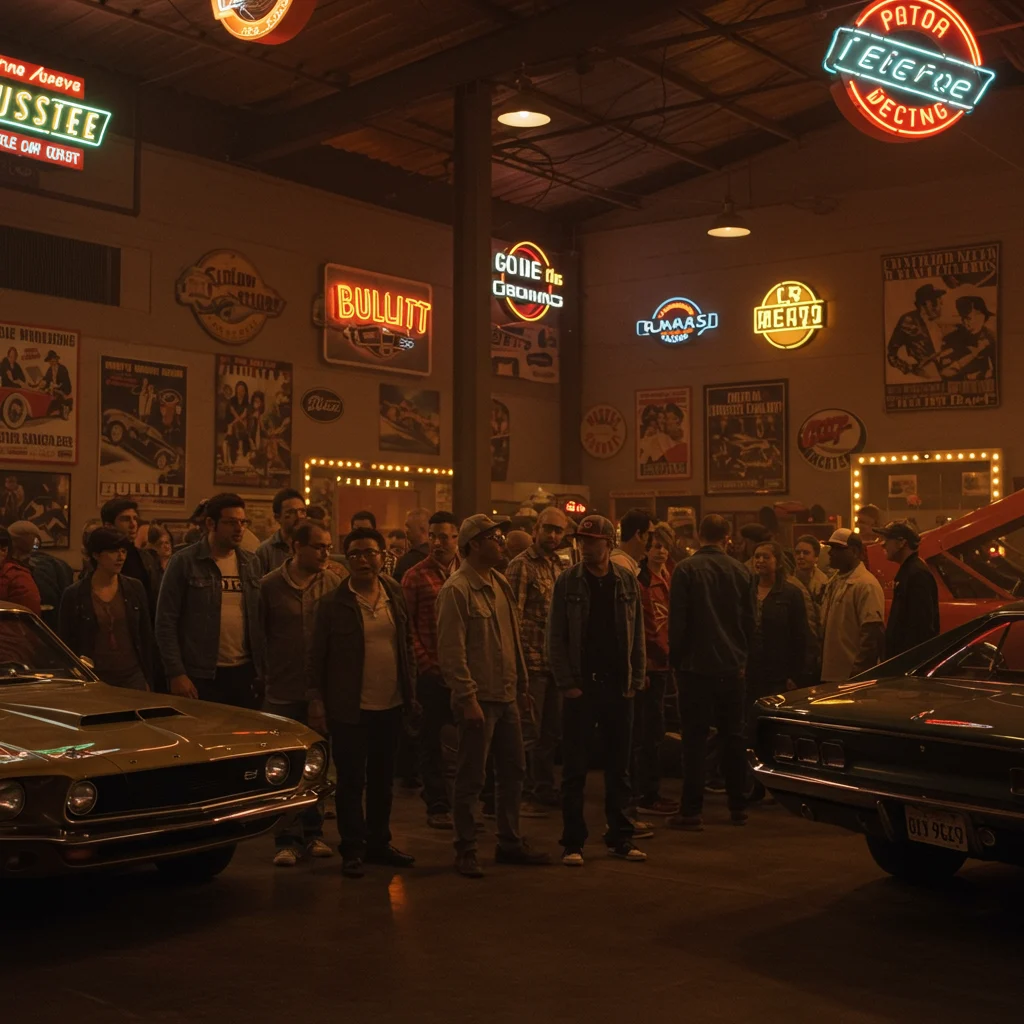
Are the Cars in Movies Authentic or Replicas?
Productions often use a mix of original cars and replicas, depending on the demands of the scene. Authentic models are used for close-ups, while replicas or modified stunt cars handle dangerous sequences. This approach helps preserve rare originals while ensuring the safety and continuity of the film.
How Do Studios Acquire Classic Muscle Cars?
Studios source cars from collectors, specialty rental companies, and restoration experts. Sometimes, manufacturers provide new or concept models for promotional purposes. The process requires careful negotiation and planning to secure the right vehicles for each production.
Can Fans Buy Movie-Used Muscle Cars?
Occasionally, cars used on set are auctioned or sold to private collectors. These vehicles often command high prices due to their provenance and cultural significance. For many fans, owning a movie-used muscle car represents the ultimate connection to their favorite films.
Conclusion: The Enduring Appeal of Muscle Cars in Hollywood
Why Will Muscle Cars Always Have a Place in Movies?
Muscle cars possess a timeless magnetism that transcends trends and technology. Their combination of raw power, visual drama, and cultural symbolism guarantees that they will continue to feature prominently in cinema for years to come. These vehicles not only fuel adrenaline but also evoke a sense of nostalgia and aspiration in audiences worldwide.
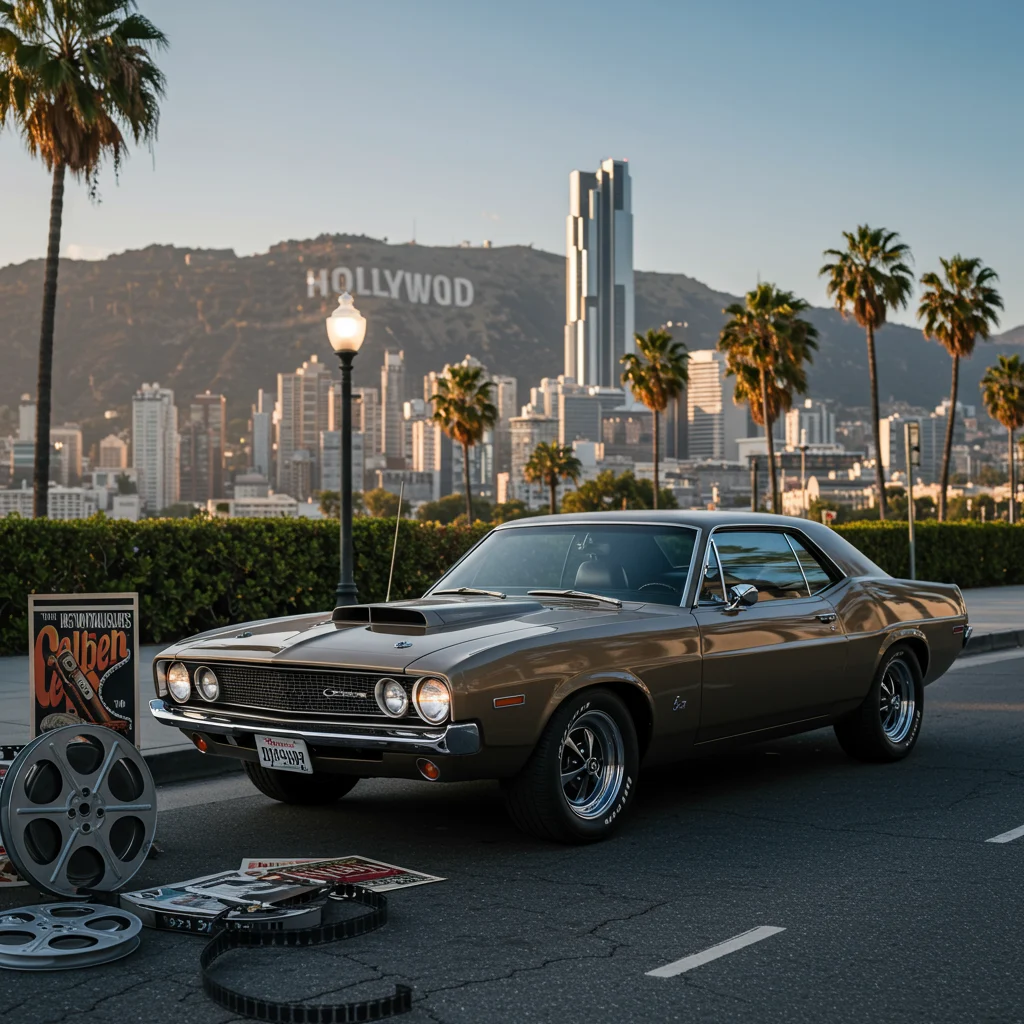
How Can Fans Experience These Iconic Cars Today?
For those who dream of getting behind the wheel of a legendary muscle car, there are numerous opportunities—from car shows and museums to specialty driving experiences. Capital Exotic offers enthusiasts a chance to connect with these automotive icons in unforgettable ways. To learn more about how you can experience the thrill and heritage of muscle cars, visit Capital Exotic today.

